How to Design Sewing Room: 2024 Best Creative Layout Ideas
Ever found yourself tangled in a web of fabric and threads, searching for that elusive pin while sewing?
Creating a sewing room that’s both functional and inspiring is an art. From organizing fabrics to optimizing workspace, this guide will help you design your dream sewing sanctuary.
We’ll unravel space-saving storage solutions, ergonomic layout ideas, and tips for maximizing natural light. Whether you’re a seasoned seamstress or just starting out, crafting a well-designed sewing space can elevate your creativity and productivity.
Designing the perfect sewing room isn’t just about aesthetics; it’s about creating an environment where every spool of thread has its place and every creative impulse can flourish. Ready to transform your cluttered chaos into an organized oasis?
Key Takeaways
- Plan your sewing room layout carefully, considering factors like natural light, electrical outlets, and workflow to create an efficient and comfortable space.
- Maximize small spaces by utilizing vertical storage, foldable furniture, and multifunctional pieces to make the most of limited square footage.
- Get creative with your sewing room layout by experimenting with different furniture arrangements, modular storage systems, and versatile work surfaces to suit your specific needs.
- Invest in smart storage solutions such as wall-mounted shelves, pegboards, clear bins, and drawer dividers to keep sewing supplies organized and easily accessible.
- Design a sewing island or a central work table to provide ample workspace for cutting, pinning, and assembling projects while also offering additional storage options.
- Organize your fabric collection by color, type, or project, using shelves, bins, or hanging organizers to maintain a tidy and inspiring sewing environment.
How to Plan Your Sewing Room
Space Assessment
When designing a sewing room, it’s crucial to start by evaluating the available square footage. Consider where you’ll position your sewing machine, cutting table, and storage units.
Take note of any natural light sources in the room as good lighting is essential for accurate stitching and fabric selection. Assess existing storage options such as shelves, cabinets, or drawers to determine if they meet your needs.
Design Objectives
Defining the purpose of your sewing room is vital before diving into the design process. Are you solely using it for sewing projects or will it also serve as a crafting space?
Set specific design goals such as maximizing storage capacity or creating an inspiring environment that boosts creativity. Prioritize functionality by ensuring easy access to tools and materials while also paying attention to aesthetics for an enjoyable and visually appealing workspace.
Functional Zoning
Allocate specific areas within your sewing room for different tasks like sewing, cutting fabrics, and pressing garments. By creating distinct work zones, you can streamline your workflow and avoid cluttering one area with multiple activities.
Ensure that there’s enough space between each zone so you can move around comfortably without feeling cramped during various stages of your projects.
Style Preferences
Consider determining your preferred interior design style when planning a sewing room. Whether it’s modern, vintage-inspired, or minimalist, selecting a style will guide color schemes and decor themes throughout the space.
Incorporate personal taste into the design through decorative elements like artwork on walls or accent pieces on shelves that reflect your unique personality.
Maximizing Small Spaces
When designing a sewing room, it’s crucial to make the most of every inch, especially in smaller spaces. One effective way to achieve this is by incorporating vertical storage solutions.
By utilizing wall space for storage, you can free up valuable floor space and keep your sewing room organized. Installing shelving units for fabric and supplies is an excellent way to maximize vertical storage potential.
For instance, consider using floating shelves or adjustable shelving systems that can be customized to fit your specific needs. This allows you to store fabrics, threads, and other supplies neatly while keeping them easily accessible during your sewing projects.
Maximizing vertical storage potential enables you to maintain a clutter-free environment within the limited space available.
Another essential strategy for optimizing a small sewing room is integrating foldable furniture into the layout. Choosing collapsible tables and chairs allows you to create flexibility within the sewing room while conserving space when they are not in use.
These space-saving furniture designs enable you to transform your sewing area into a multifunctional space as needed.
For example, folding tables can serve as cutting surfaces during crafting sessions and then be conveniently stowed away after use. Similarly, collapsible chairs provide seating when required without occupying unnecessary space when unoccupied.
In addition to vertical storage solutions and foldable furniture, implementing wall-mounted solutions offers practical ways of organizing tools and equipment in a compact sewing room setting. Installing pegboards provides an efficient method of arranging various tools such as scissors, rulers, and rotary cutters within easy reach.
Furthermore,** hooks** racks offer convenient options for hanging frequently used items like measuring tapes or spools of thread on the wall instead of taking up counter or table surface areas.
Creative Sewing Room Layout Ideas
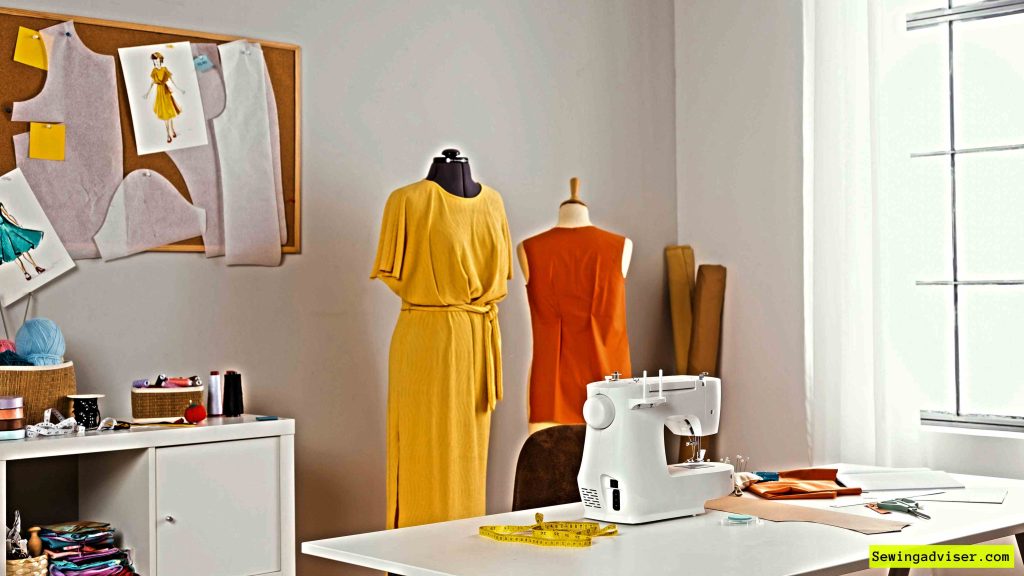
When designing a sewing room, it’s essential to consider various layout options for an efficient and functional workspace. One creative layout idea is the U-shaped design, which maximizes the available space and enhances accessibility.
By incorporating a U-shaped sewing table, you can optimize your workspace and create an organized environment for your sewing projects.
The U-shaped layout offers several benefits for a sewing room. It allows you to have different workstations within reach, such as cutting, sewing, and pressing areas. This design also promotes a smooth workflow by minimizing unnecessary movement between tasks.
For example, when working on a sewing project that involves both cutting fabric and using the sewing machine, having these areas in close proximity streamlines the process.
Another option to explore is the L-shaped configuration for your sewing station. This layout effectively utilizes corner spaces in the room while providing dedicated areas for specific tasks. For instance, you can set up your cutting and pressing stations at each end of the L-shaped desk, optimizing these zones for their respective purposes.
In addition to U-shaped or L-shaped layouts, incorporating a central island into your studio creates a multifunctional centerpiece that enhances collaboration and social interaction during crafting sessions with friends or family members.
A central island serves as a versatile workstation where multiple individuals can work simultaneously on different aspects of a project or engage in collaborative activities such as fabric selection or pattern planning.
Furthermore, it provides ample storage opportunities underneath its surface while offering additional display space for decorative elements like pincushions or handmade crafts.
Storage Solutions
Storage solutions play a crucial role in maintaining an organized and efficient workspace. Utilizing clear bins is an excellent way to keep fabric and materials neatly organized while ensuring easy visibility of the contents.
By using transparent containers, you can simplify inventory management and quickly locate specific items without having to rummage through multiple opaque boxes.
Customizing storage systems allows for a streamlined organization within your sewing room. You can minimize clutter by incorporating efficient storage solutions tailored to your specific needs. Modular components offer flexibility, enabling you to create a setup that maximizes space usage and enhances accessibility to essential tools and supplies.
Decorative baskets serve as both functional storage options and visually appealing elements in your sewing room. These baskets not only help uphold the aesthetic appeal of the space but also provide practical organization for various items such as threads, ribbons, or small sewing notions.
By integrating stylish baskets into your storage design, you can match the decor of your sewing room while keeping everything neatly arranged.
Organizing Sewing Supplies
Categorization techniques play a crucial role in maintaining an efficient and functional sewing room. By categorizing supplies based on the frequency of use, you can ensure that the most commonly utilized items are easily accessible.
For instance, keeping frequently used threads, needles, and scissors within arm’s reach while storing less commonly used items in labeled containers or drawers can significantly enhance your workflow.
Furthermore, sorting fabrics by type and color not only adds visual appeal to your sewing room but also facilitates easy access during projects. Imagine having all your cotton fabrics neatly stacked together, followed by a separate section for denim and another for floral prints.
This kind of organization not only makes it easier to find what you need but also inspires creativity as you lay eyes on the beautifully arranged materials. Establishing efficient categorization methods such as clear storage bins or transparent pouches allows you to quickly identify contents without rummaging through multiple containers.
Labeling tips are essential. Leveraging labeling systems enables you to identify storage locations at a glance, eliminating the guesswork involved in finding specific items. Whether using adhesive labels or hanging tags, ensuring that each item has a designated place contributes significantly to sustaining order within the room.
Maintaining clear labeling systems ensures that anyone accessing your supplies can quickly understand where each item belongs and how they should be returned after use.
Prioritizing accessibility is key when designing a functional sewing room layout. Placing frequently used items within easy reach minimizes time spent searching for tools during projects imagine being able to grab your favorite pair of fabric shears without having to bend down or stretch across shelves every time they’re needed!
Customizing storage heights based on ergonomic principles further enhances accessibility; heavier items should be stored at waist level or lower while lighter ones can be placed higher up this reduces strain on your body when reaching for supplies.
Designing a Sewing Island
Size and Shape
When designing your sewing room, it’s crucial to determine the ideal dimensions based on the available space. Consider the various activities that will take place in the room, such as cutting fabric, ironing, and sewing. Balance is key; you want enough space for movement but not so much that it becomes inefficient.
Tailor the room’s size and shape to your specific needs. For instance, if you primarily work with large pieces of fabric, ensure there’s ample open floor space for spreading out materials. On the other hand, if you focus more on smaller projects like quilting or crafting, consider incorporating compact storage solutions to maximize usable space.
Material Selection
Prioritize durable and easy-to-clean materials when designing your sewing island. Given that this area will be subject to wear from tools and equipment usage, selecting sturdy materials can prolong its lifespan while minimizing maintenance efforts.
While durability is important, don’t overlook aesthetics. Aim to strike a balance between practicality and visual appeal when choosing materials for countertops, storage units, and seating areas within your sewing island.
Incorporating quality materials suited to the sewing environment can elevate both the functionality and ambiance of your workspace. For example: opt for scratch-resistant surfaces on workstations where cutting fabrics or using rotary cutters will be frequent activities.
Tool Integration
When creating your ideal sewing island design plan, think about how best to incorporate dedicated storage for various sewing tools. This might include specialized compartments for scissors of different sizes or racks for organizing threads by color or type.
Maximize efficiency through strategic tool placement; store frequently used items within arm’s reach while reserving less commonly used tools for more distant locations within storage units or drawers.
Accessibility should be a priority when integrating tools into the design of your sewing island; aim to create an ergonomic layout that minimizes unnecessary movements during tasks such as measuring fabric lengths or retrieving necessary supplies.
Fabric Organization
Efficient folding methods are crucial. Investigate space-saving folding techniques such as the KonMari method or rolling fabrics to maximize storage capacity. By customizing your folding methods, you can make the most of the available space in your sewing room.
To further optimize fabric organization, consider color coordination. Harmonize color schemes throughout the room to create a visually appealing and cohesive atmosphere. Balance vibrant hues with calming tones in the design to ensure that the sewing room is both stimulating and tranquil.
Protection from dust is essential for maintaining the quality of your fabrics and equipment. Prioritize dust-resistant storage solutions such as sealed containers or cabinets with tight-fitting doors. Minimize dust accumulation on fabrics and equipment by investing in protective covers or using vacuum-sealed storage bags.
Incorporate color coordination into your fabric organization strategy by arranging materials according to their colors, making it easier for you to find what you need at a glance.
Multi-Purpose Sewing Areas
Crafting Zones
When designing a sewing room, it’s essential to establish dedicated crafting zones for different activities. Customizing each zone to accommodate specific crafting needs ensures efficiency and organization. For instance, you can have a designated area for your sewing machine, another for cutting fabric, and yet another for storing materials.
Segmenting the room into specialized crafting zones allows you to create an organized space where everything has its place. This means that when you sit down at your sewing machine, all your necessary tools and supplies are easily accessible without having to move around the entire room.
Cutting Stations
Dedicating ample space for cutting fabric and patterns is crucial in any well-designed sewing room. Equipping these cutting stations with suitable surfaces and tools further enhances their functionality. For example, having a large table or countertop provides enough space to lay out fabrics comfortably while ensuring they remain wrinkle-free during cutting.
Maximizing efficiency in cutting activities through designated stations also involves organizing your tools within arm’s reach of the cutting area. This could mean installing shelves or drawers nearby to store scissors, rotary cutters, rulers, and other essential items needed during the sewing process.
See Also: How to Draw Sewing Patterns
Pressing Corners
In addition to crafting zones and cutting stations, dedicating specific corners or areas as pressing stations is vital when designing a functional sewing room. Outfitting these pressing areas with appropriate ironing equipment helps streamline the garment-making process by allowing seamless transitions between construction steps.
Prioritizing safety and convenience in pressing station placement ensures that they are situated away from high-traffic areas but still easily accessible from key workstations like the sewing machine or cutting station. This not only optimizes workflow but also minimizes any potential hazards associated with hot irons being near crowded spaces.
Aesthetic Touches
Color schemes play a crucial role in setting the ambiance. To create an inviting and inspiring space, balance bold and neutral colors within the room’s palette. For instance, incorporating soft pastel tones with pops of vibrant colors can evoke a lively yet calming atmosphere, perfect for sparking creativity during sewing projects.
Customizing the color scheme to reflect personal preferences is essential. Consider integrating your favorite colors or hues that resonate with your personality into the design. This not only adds a personal touch but also creates a space where you feel comfortable and inspired to pursue your creative endeavors.
Lighting fixtures are vital in creating an ideal sewing environment. It’s important to incorporate task lighting for focused work areas such as sewing tables or cutting stations.
By prioritizing adequate lighting throughout the sewing room, you ensure that every corner is well-lit, reducing eye strain and enhancing visibility during intricate stitching or fabric-cutting tasks.
Balancing natural and artificial lighting sources is key when designing a functional sewing room. Natural light can uplift the mood of the space while providing ample brightness during daytime activities. Combining this with adjustable artificial lighting allows you to control the intensity based on specific tasks or time of day.
Personal artifacts add character and warmth to any space; therefore, incorporating meaningful artifacts in your sewing room can elevate its aesthetic appeal significantly. Balance functionality with sentimental value when selecting these items – consider displaying handmade crafts or artwork that resonates with your passion for sewing.
Summary – How to Design Sewing Room
Congratulations! You’ve now got a treasure trove of ideas to design your dream sewing room. From maximizing small spaces to adding aesthetic touches, you’ve learned how to create a functional and inspiring space for your crafting endeavors.
Now it’s time to put these plans into action. Start by assessing your available space and envisioning how each idea can fit into your sewing room. Get creative with the layout and storage solutions, ensuring that everything is easily accessible. Don’t forget to add personal touches that make the space uniquely yours.
Now, roll up your sleeves and get ready to bring your sewing room to life. Whether you’re a seasoned seamstress or just starting out, a well-designed sewing room can make all the difference in your crafting experience. Happy designing!
Frequently Asked Questions
How can I effectively plan my sewing room layout?
When planning your sewing room, consider the workflow and accessibility of tools and materials. Sketch a rough layout to visualize the space. Think about natural light sources and how they can enhance your workspace. It’s like creating a symphony – every element should harmonize.
What are some creative storage solutions for a sewing room?
Utilize vertical space with wall-mounted shelves or pegboards to keep frequently used items within reach. Invest in clear storage containers to easily identify contents. Consider multi-functional furniture with built-in storage options to maximize space efficiently.
How do I organize my sewing supplies for easy access?
Categorize your supplies into groups such as threads, needles, and fabrics, then designate specific areas or containers for each category. Utilize transparent organizers or labeled bins so you can quickly locate what you need without rummaging through cluttered drawers.
What are some aesthetic touches that can enhance my sewing room design?
Incorporate personal touches such as inspiring artwork, decorative pin boards, or vibrant fabric patterns to infuse personality into the space. Adding plants not only brings life but also purifies the air while providing a calming ambiance for your creative endeavors.
Can you suggest ways to create a multi-purpose sewing area within limited space?
Consider foldable tables or desks that can be easily tucked away when not in use. Opt for modular furniture pieces that serve dual functions, such as an ironing board that doubles as a cutting table. Flexibility is key when maximizing functionality in compact spaces.
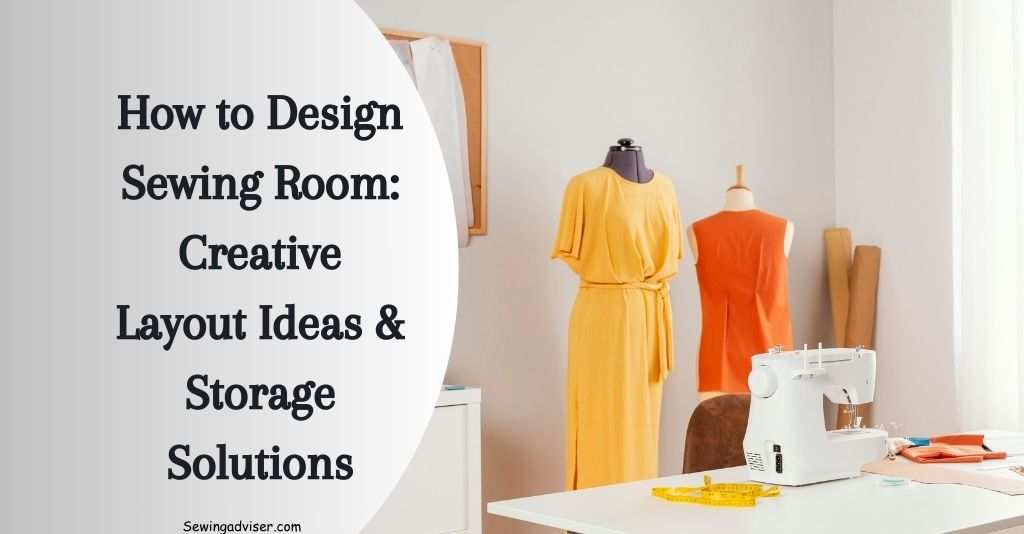
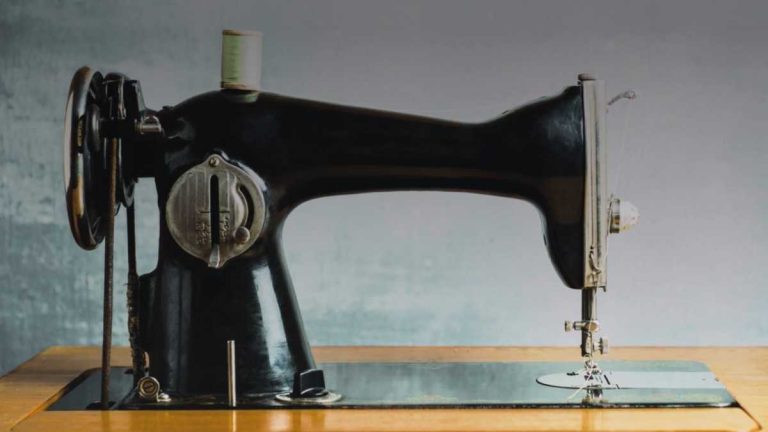

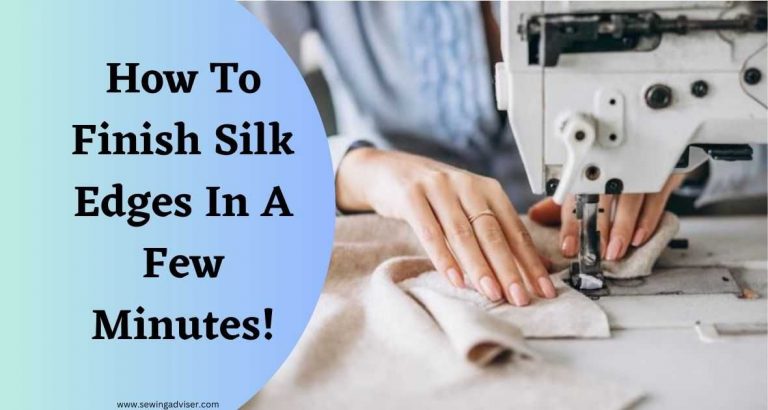
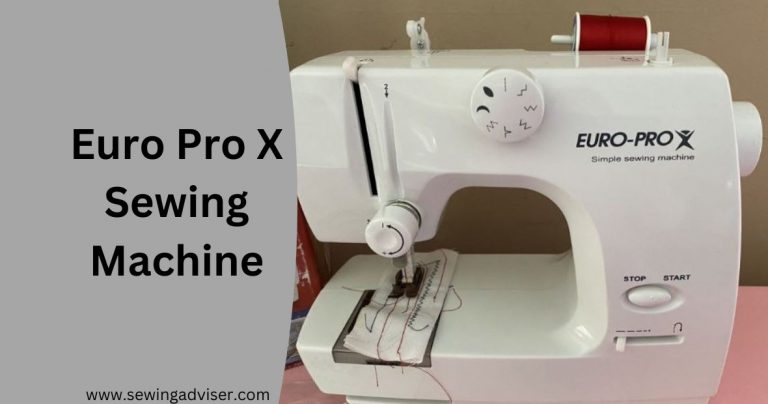
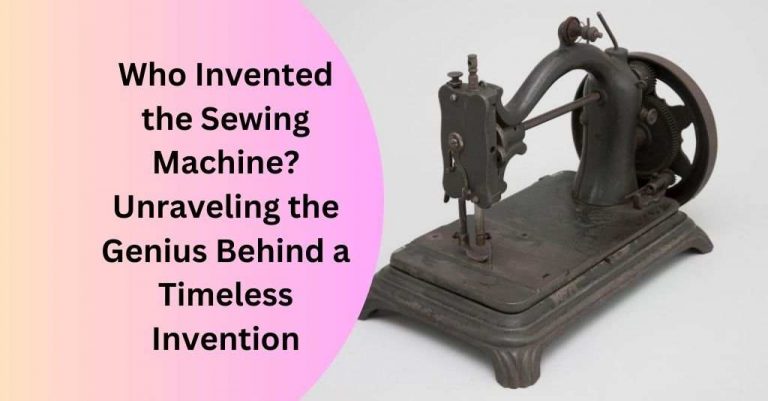
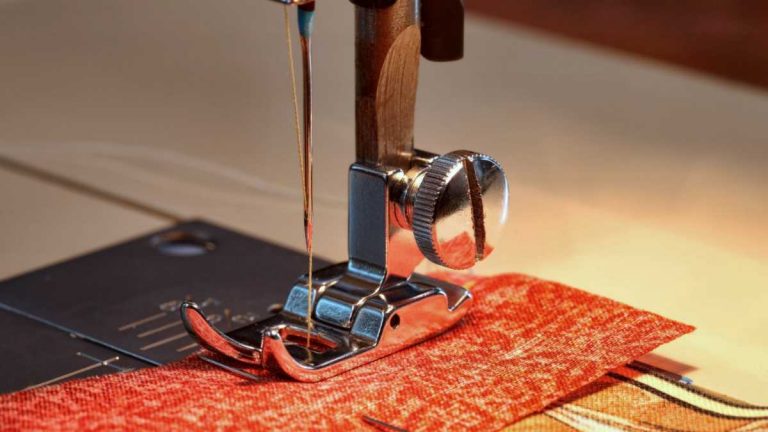
2 Comments